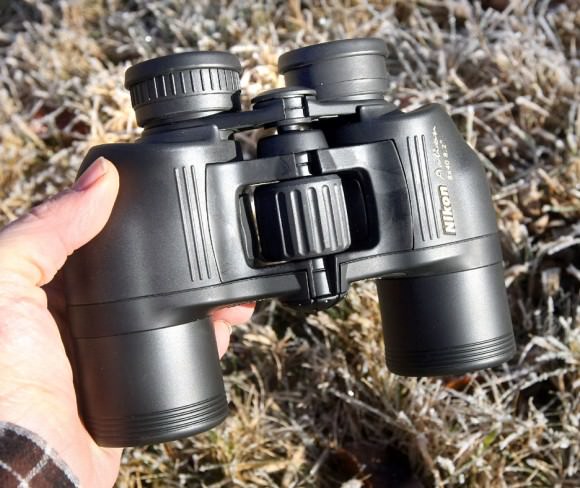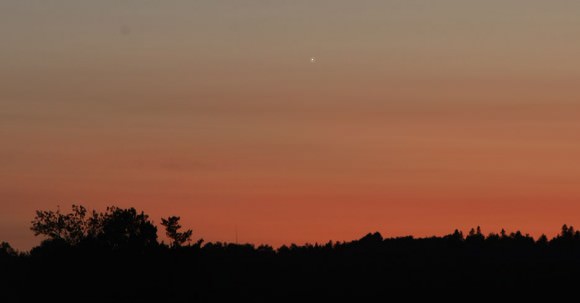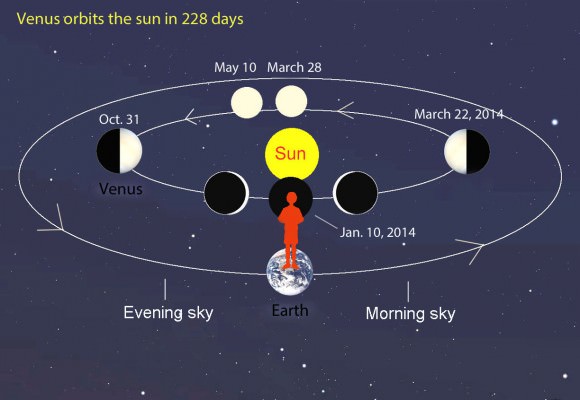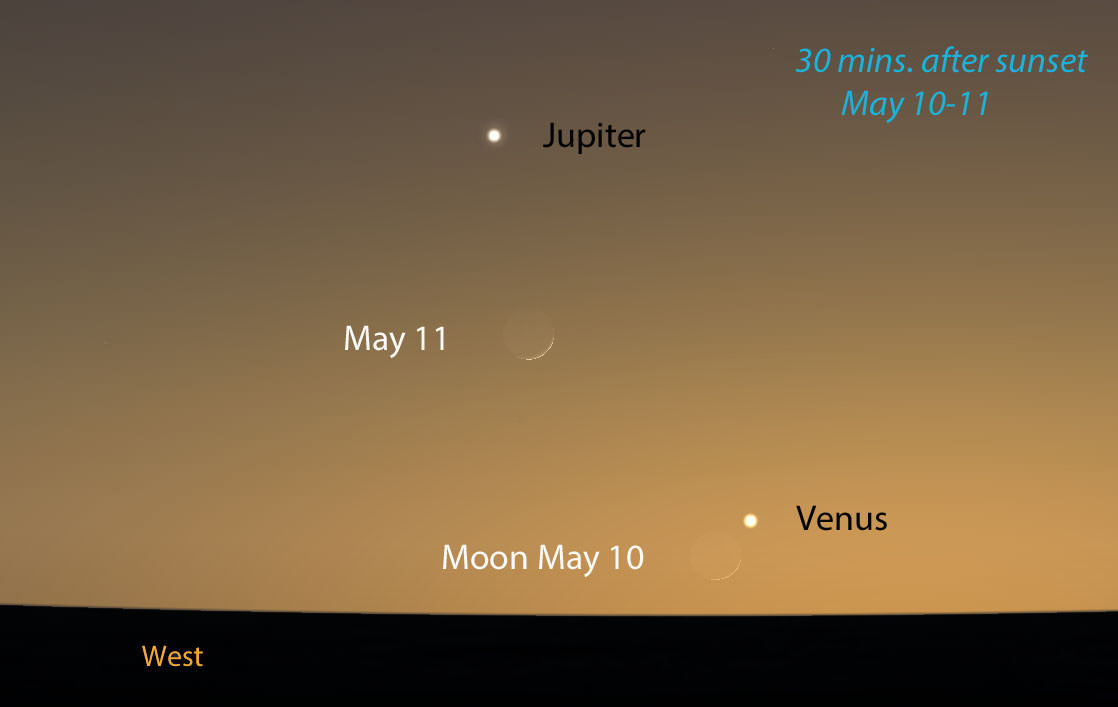Has Venus finally come out of hiding? For the past couple months it’s kept close to the sun, hidden in its glare, but come Friday, sky watchers in mid-northern latitudes may get their first shot at seeing the planet’s return to the evening sky.
It won’t be easy, but you’ll have help from the knife-edged crescent moon. Like a spring bloom raising its head from the dark earth, Venus will poke just 4 degrees above the western horizon a half hour after sunset. The moon will be about 2 degrees to the lower left of the planet. Seeing both requires a wide open view to the west and a clean, cloudless sky. It also helps to know when the sun sets for your location – easily found by clicking HERE.

Take along a pair of binoculars. They’ll help fish out both moon and planet in the bright twilight sky. It’s also advantageous to arrive at your viewing spot a little early. Enjoy the sunset, and then take a minute to make sure you’re binoculars are focused at infinity. If you don’t, Venus will be a blur and much harder to find. I usually focus mine on a cloud or the very farthest thing out along the horizon.
Once you’re all set, point your binoculars in the sunset direction and slowly sweep back and forth. Venus will be a short distance to the left or south of the brightest glow remaining along the horizon. Since most binoculars have a field of view of 4 or 5 degrees, when you place the horizon at the bottom of the view, the moon should appear in the middle of the field and Venus up near the top. Look higher and lower and farther left and right to be thorough. Once spotted in binoculars, take the visual challenge and see if you can find it without optical aid.

If you succeed, you’ll be rewarded with an elegant eyeful. Swamped in skylight, Venus will appear unusually meek but still possess its classic fiery brilliance. The newborn crescent will float just a degree and a half (three full moon diameters) away. From the U.S. east coast, the moon will be just 24 hours old; from the west coast 27 hours. Seeing such a young moon is a rarity in itself, but in the company of Venus that much finer.
Let’s say conditions aren’t ideal and you miss the pair on Friday. Well, try again on Saturday. The moon will be higher and much easier to see. Use it as a bow to shoot an imaginary arrow horizon-ward to Venus. And did I mention Jupiter? The planet that cheerily lit up our winter nights is now departing in the west. Watch for it to have a close encounter with Venus on the nights of May 27-28.
With its perpetual clouds, Venus would be a most distressing planet to any skywatcher unfortunate enough to live there. Yet it’s those same clouds that make it the most brilliant planet in the solar system seen from Earth. Clouds reflect sunlight splendidly. Combined with Venus’ proximity to Earth, it’s no wonder the planet earned the title of goddess of love and beauty.

In the first 3 months of this year, Venus remained close to the sun in the morning sky and difficult to see. Then on March 28, it passed behind the sun on the opposite side of Earth’s orbit; astronomers call the lineup superior conjunction. Seen from Earth, Venus looked like a tiny full moon. We’re now about 6 weeks past conjunction and the planet has begun to peek out into the evening sky. At 98% illuminated, it still looks nearly full through a telescope, but that will change in the coming months as Venus approaches Earth in its speedier orbit. Watch for the goddess to grow larger in apparent size while at the same time slimming down her phase from full to half to crescent. Good luck getting re-acquainted this weekend!


Live long and prosper!
Hi! Is this going to be visible from Argentina? Do you know where can I check that?
or if there is any web page we I can see it online? 🙂
Bob, was the image “venus orbits the sun in 228 days” created by a software? if so, could you please share it’s name. thanks
Planets do not hide…. they’re not people… care to use the right terms…..